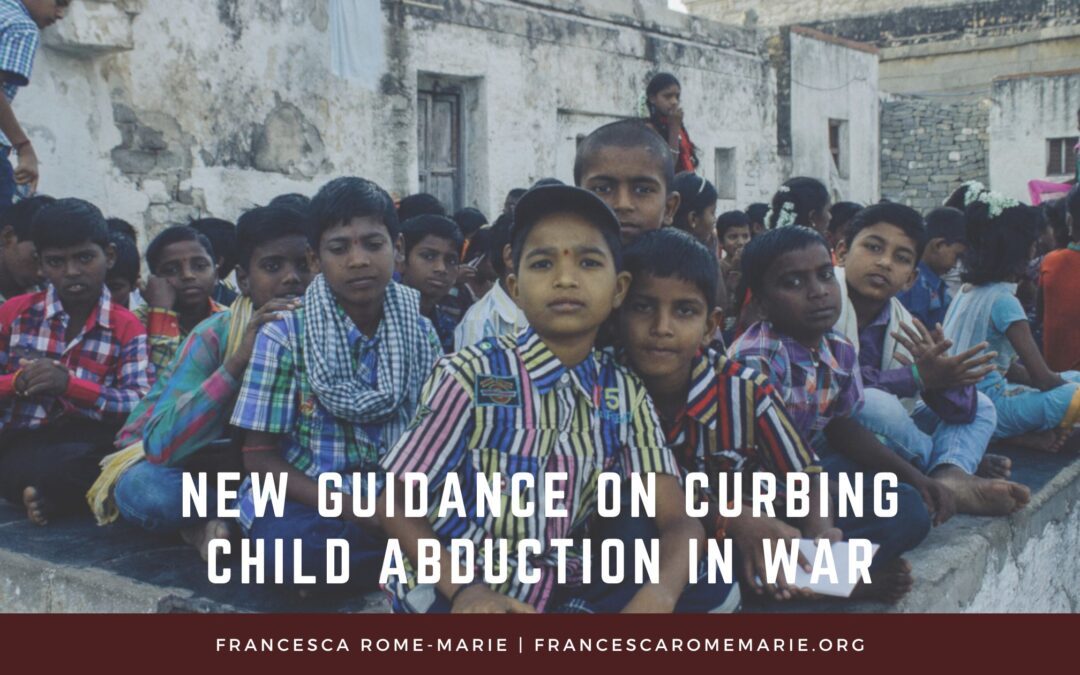The UN identifies six grave violations committed against children in armed conflict:
- killing and maiming
- recruitment or use of child soldiers
- sexual violence
- abduction
- attacks against schools or hospitals
- denial of humanitarian access
A recent UNICEF report points out that from 2010 to 2020, there was an 185% increase in these violations. In 2020 alone the UN noted a 90% increase in abduction and has released new guidance for identifying, documenting, reporting, and preventing it.
What is Abduction?
To be classified as abduction several criteria must be met. It must be perpetrated by a party to armed conflict and must be committed in the context of, and associated with, that conflict. This is to differentiate from criminal abductions committed by civilians.
The act of abduction can occur by force, coercion, fraud, or under threat. Since the victim is under the age of 18 at the time of abduction, whether they consent to being taken is irrelevant.
There must also be an exploitative purpose. Since that purpose might not be immediately clear, all cases where such a purpose is presumed should be reported.
Overlap with Other Grave Violations
It is in the exploitative purpose that we see overlap between abduction and other grave violations. Children can be abducted as part of an attack against their school, for the purpose of recruitment as a child soldier, to be the victim of sexual violence, or all three.
A single child may be the victim of multiple violations, and the new guidance provides clarification on making an accurate accounting of the horrific abuses inflicted on children in conflict areas.
The Role of Gender
Although historically boys have been the majority of documented abduction cases, the report warns that girls are being “increasingly targeted at an alarming rate.” Indeed, another recent report on the gender dimensions of abduction states that girls are often less visible and therefore undercounted and less reintegrated into their communities. This may be because of the nature of the exploitative purposes for their abduction, such as forced marriage or sexual exploitation.
Distinction Between Deprivation of Liberty and Abduction
Children who are detained because they are suspected of being associated with a party to the conflict are not victims of abduction under the guidelines. However, this should be reported as an issue of concern related to recruitment and use of children.
The full guidelines also discuss the role of child abduction in peace processes.

